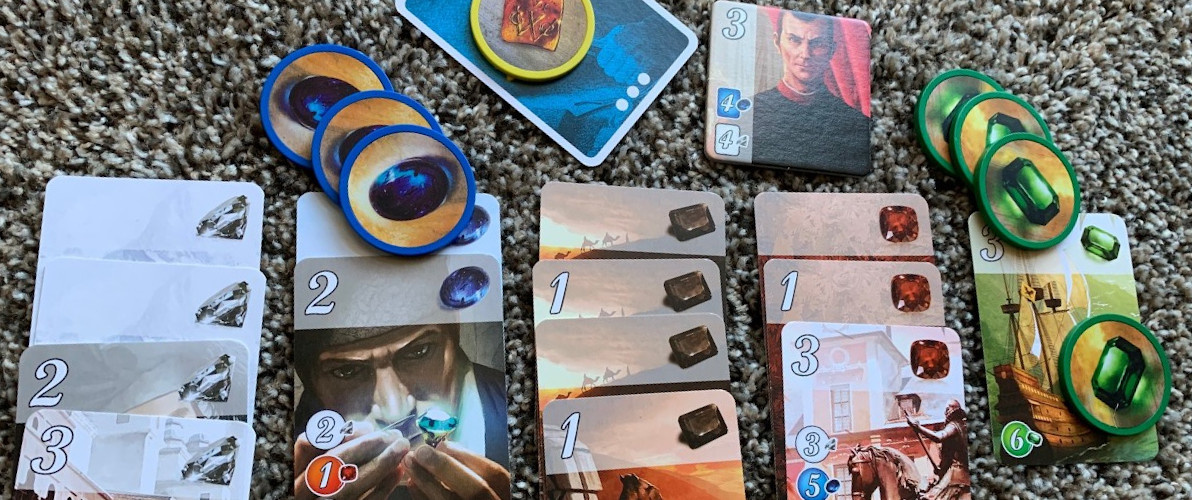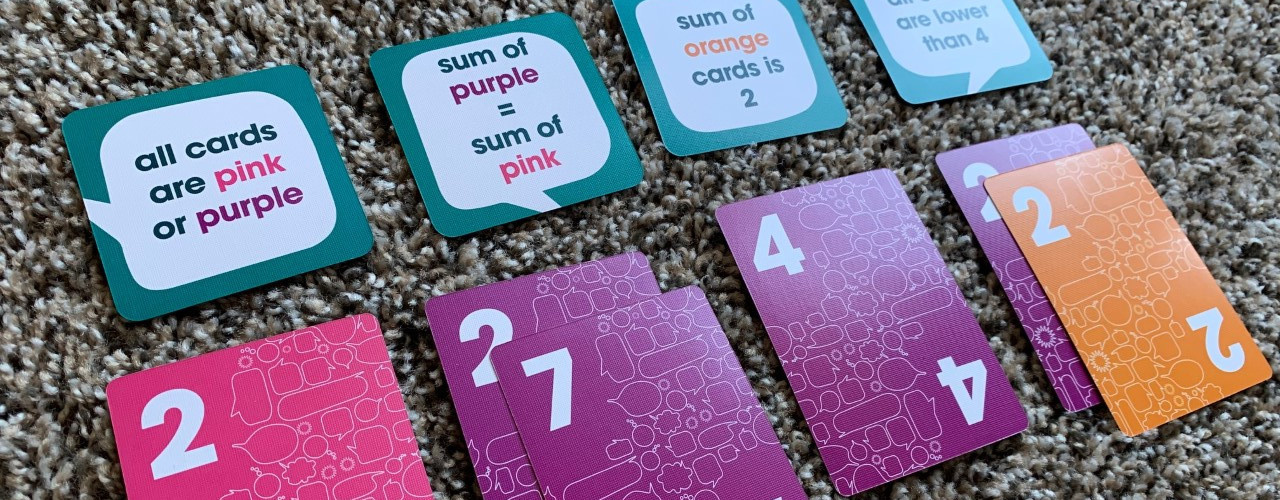3 Family Games You Want to Play Again ... and Again ... and Again
- Posted on
- By Fair Game
- Posted in Board Games, cahoots, family games, splendor, tiny towns
- 0

The games in this post are not only some of our favorites titles, but they are games we find ourselves returning to again and again, oftentimes in the same night.
The last turn has been taken, secret scores have been revealed and victory points have been tallied. But after the winner takes their obligatory victory lap around the house (and done the also-very-obligatory victory dance), what comes next?
We play again, of course.
The games in this post are not only some of our favorites titles, but they are games we find ourselves returning to again and again, oftentimes in the same night. These three games share the following attributes:
-
Recommended for ages 10 and above (though not necessarily inaccessible for younger gamers).
-
Support 2 to 4 players.
-
Relatively short game length (around 45 minutes).
-
Easy to learn, difficult to master.

Splendor
We first played Splendor about five years ago and fell in love with it almost immediately. We love the simple, elegant rules. (The rulebook is only four pages, and it honestly could have been done in one). We love watching our gem empire unfold before us as our wealth increases. We love the weighty plastic poker chip tokens.
The gameplay takes the best parts of economic simulation games like Monopoly and Catan and streamlines the mechanisms for a shorter play time.
Each round, players can either (a) take some of those wonderful plastic poker chip tokens, (b) use those chips to purchase a card from the available market or (c) reserve a card for the future, preventing their opponents from being able to purchase it. The cards you purchase will provide you a discount on future purchases of cards, and the more "expensive" cards will score you victory points ... the first one to 15 victory points wins (unless another player can top that in the same number of turns.)
Within that simple framework are layers of strategy. Do you want to collect gems and buy the highest-scoring cards available ... or do you want to buy a variety of cards to have massive discounts later on? Do you want to spend a turn reserving a card to stop opponents from taking your real estate, or do you want to anticipate what card your opponents want and reserve it to cripple their plans?
Regardless of whether you win or lose your first game, you will be ready to play again immediately afterwards, working towards perfecting the ideal strategy.
And when it seems like you've explored the game from one end to the other, check out the expansion for Splendor. It adds four modules that you can use to change up the game.

Cahoots
We describe Cahoots from Gamewright Games as "cooperative Uno" and sitting here and writing this now, it's hard to come up with a better, easier explanation.
Each turn, players play a card from their hand onto one or four piles. Just like Uno, you can only play a card if it matches either the color or the number of the card beneath it.
But instead of trying to get rid of your hand, players work together to complete a number of objectives. "All cards add up to 10" means that the top cards on the four piles need to add up to 10. "Alternating piles are purple" means that the top card of the first and the third stack (or the top card of the second and fourth stack) need to be purple.
What starts as a simple exercise in basic math and reading comprehension quickly grows a bit more complex. In the base version of the rules, players are restricted in what information they can share with their teammates (we have "house ruled" it where players can't say colors or numbers).
In a harder version of the game, players aren't allowed to talk at all, relying on empathy and context to cooperate.
Cahoots feels like a puzzle that everyone is working to assemble simultaneously. There are going to be moments when you play out the perfect series of cards, achieving goal after goal, and then there are going to be moments when you need to rely on your teammates to play the lead role. The important element is that all players need to work to set each other up for success ... and that's something everyone needs to practice.
What makes Cahoots so addicting is the same as with Splendor – the hunt for the perfect strategy. No sooner will you play your final card in Cahoots than the table will erupt with discussion over the game.
"What were you trying to do when you played that purple 7?"
"Did you have that orange two?"
Deliberation over what you did wrong will lead you to talk about how you could do better, and that will lead you right into the next round.

Tiny Towns
Tiny Towns came out last year and quickly climbed the ladder of Fair Game favorites. The game is easy to teach, poses an intricate puzzle, and accommodates 1 to 6 players with ease ... what's not to love?
During the game, players take turns calling out a resource which they and all other players add to a 4x4 grid. The goal is to create one of seven different building resource patterns; once you've completed the pattern on your board, you can remove the required resources and add the corresponding building to one of the previously occupied spaces.
The building will have a special effect, either providing victory points or some utility. However, the building also blocks you from playing resources there in the future, constricting the board and making it more difficult to construct your next structure.
Just like Cahoots, Tiny Towns is a puzzle, and it poses some very interesting strategic questions that become more intricate as the game progresses.
Turns take place virtually simultaneously, keeping the game moving even with higher players counts.
Player interaction is limited but nuanced – by anticipating what resources your opponents are going to call on their next turn, you can lay the perfect plan.
But what makes this game so addicting is the sheer amount of replayability. Of the seven base building types, six of them have four different variants, meaning that you can play the game hundreds of times with different set-ups. Not to mention that each player is also given a unique building at the start of each game that only they can build and that stays a secret until they construct it.
And if that still isn't enough, AEG recently released an expansion for the game that adds a new mechanic – and a whole lot of variety – into the game.
The list doesn't end here!
There are at least a dozen other addicting family games on our shelves that we would confidently recommend to you, and we encourage anyone interested in more recommendations to reach out to us via email ([email protected]) or with your favorite social media platform (Fair Game is on Twitter, Facebook & Instagram!)
Have your own favorite addictive family game? Share it in the comments!

Comments
Be the first to comment...